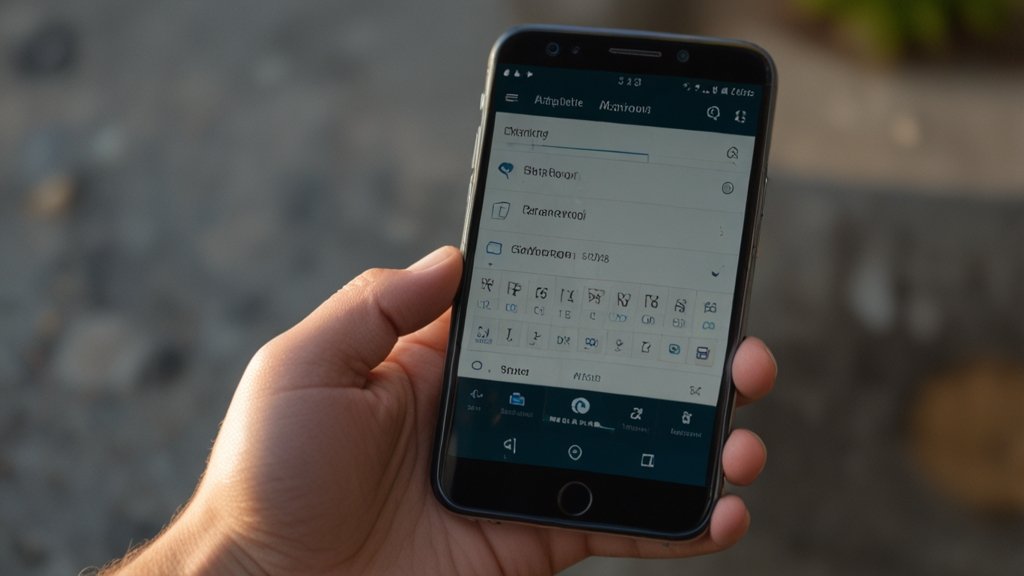Mobile devices have become an integral part of our daily lives, offering more than just communication and entertainment. They are powerful tools that can be customized to fit individual needs, making everyday tasks easier and more efficient. Optimizing your mobile settings is essential to ensure a smooth user experience and improve both productivity and security. In this article, we explore some essential mobile settings that can enhance the way you use your smartphone.
1. Display Settings
Your phone’s display is your primary interaction point, so adjusting it for comfort is crucial.
- Brightness: Most smartphones offer automatic brightness adjustments based on ambient light. However, you can manually set brightness levels for specific needs. Keeping it lower conserves battery life.
- Dark Mode: Available on both Android and iOS, dark mode reduces eye strain in low-light conditions and conserves energy on OLED displays.
- Font and Display Size: You can adjust font size and display scaling to make text more readable. This is particularly useful for users with vision impairments or those who prefer larger text.
2. Notifications Management
Too many notifications can be overwhelming. Customizing how and when you receive notifications can drastically reduce distractions.
- Do Not Disturb: This feature silences notifications, calls, and alerts during certain hours, like while you’re sleeping or during meetings.
- App-Specific Notifications: You can manage notifications for each app individually. For example, you might want real-time alerts from your email app but fewer from social media.
- Notification Channels (Android): Android allows you to categorize notifications from the same app into channels, so you can silence or prioritize specific types of alerts.
3. Security and Privacy
With increasing data privacy concerns, optimizing your mobile security settings ensures your personal information stays protected.
- Fingerprint or Face Unlock: Most modern smartphones come equipped with biometric security options, like fingerprint scanners or facial recognition, which add an extra layer of protection beyond passcodes.
- App Permissions: Review the permissions granted to apps. You can control access to sensitive data like location, contacts, and camera on both Android and iOS devices.
- Find My Device: In case you lose your phone, enabling the “Find My Device” feature on both platforms allows you to locate, lock, or remotely wipe your phone.
4. Battery Optimization
Poor battery performance is a common issue for mobile users. Adjusting certain settings can help extend your device’s battery life.
- Battery Saver Mode: Both Android and iOS come with built-in power-saving modes that limit background app usage, disable push notifications, and reduce performance to conserve battery.
- App Power Usage: Check which apps are consuming the most battery and close or limit their background activities.
- Adaptive Battery (Android): Some Android devices come with Adaptive Battery, which learns your usage patterns and optimizes power distribution to apps.
5. Wi-Fi and Connectivity
Customizing connectivity settings can enhance your mobile’s performance and security when browsing or using apps.
- Wi-Fi Preferences: Set your phone to automatically connect to trusted Wi-Fi networks while disabling it for unknown or public networks to reduce security risks.
- Hotspot Configuration: If you use your phone as a mobile hotspot, be sure to password-protect it to prevent unauthorized users from accessing your data.
- Airplane Mode: This feature cuts off all connections (Wi-Fi, mobile data, Bluetooth) to help conserve battery or during flights.
6. Accessibility Features
Modern smartphones come with a range of accessibility features designed for users with disabilities but useful for all.
- Voice Commands: Both Android and iOS have robust voice control features that allow users to interact with their phones hands-free.
- Screen Readers: Tools like VoiceOver (iOS) and TalkBack (Android) read out what’s on the screen for visually impaired users.
- Magnification and Zoom: These settings allow users to zoom in on certain parts of the screen for better visibility.
7. Data Usage Management
With limited mobile data plans, it’s important to monitor and control your data usage to avoid extra charges.
- Data Saver Mode: Enabling this mode restricts background data use and reduces the quality of streaming media to save data.
- App Data Usage Monitoring: Check which apps use the most data and adjust their background activity or restrict them to Wi-Fi only.
- Wi-Fi Assist (iOS): This feature automatically switches to cellular data when Wi-Fi connectivity is poor, but it can be turned off to save data.
8. Personalization
Making your phone truly your own involves some level of personalization.
- Wallpapers and Themes: Change the home and lock screen wallpapers or apply themes to customize icons, fonts, and colors.
- Widgets: Add widgets to your home screen for quick access to essential information like weather updates, calendar events, or music controls.
- App Shortcuts: Customize app layouts and shortcuts for easier navigation. Most Android launchers allow you to personalize the app drawer and home screen.
Conclusion
Customizing mobile settings can greatly improve your device’s performance, enhance security, and tailor the user experience to your personal needs. Whether it’s adjusting the display, managing notifications, or optimizing battery life, taking a few minutes to tweak these settings can lead to a smoother and more enjoyable mobile experience.
By staying familiar with your phone’s capabilities and regularly checking for updates, you can make the most of your device while ensuring optimal functionality and protection.

